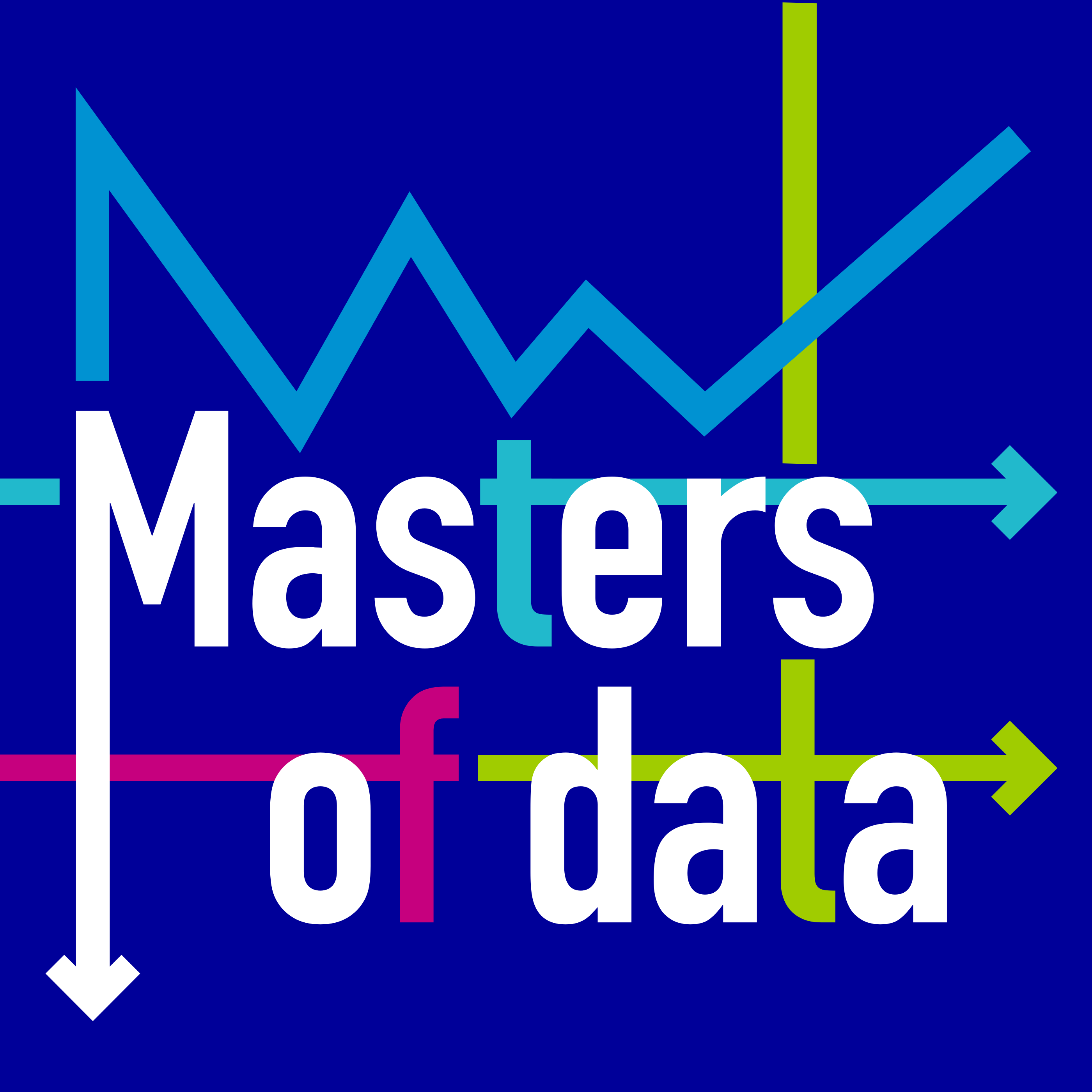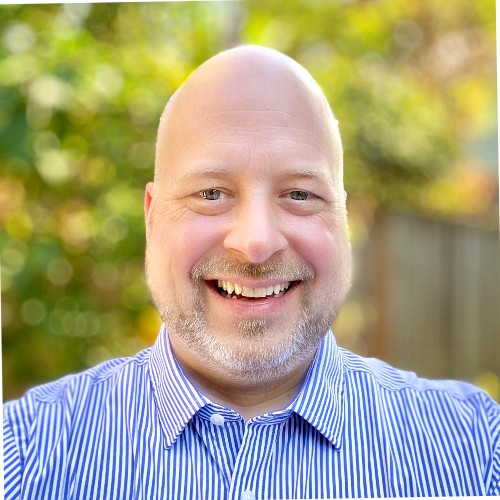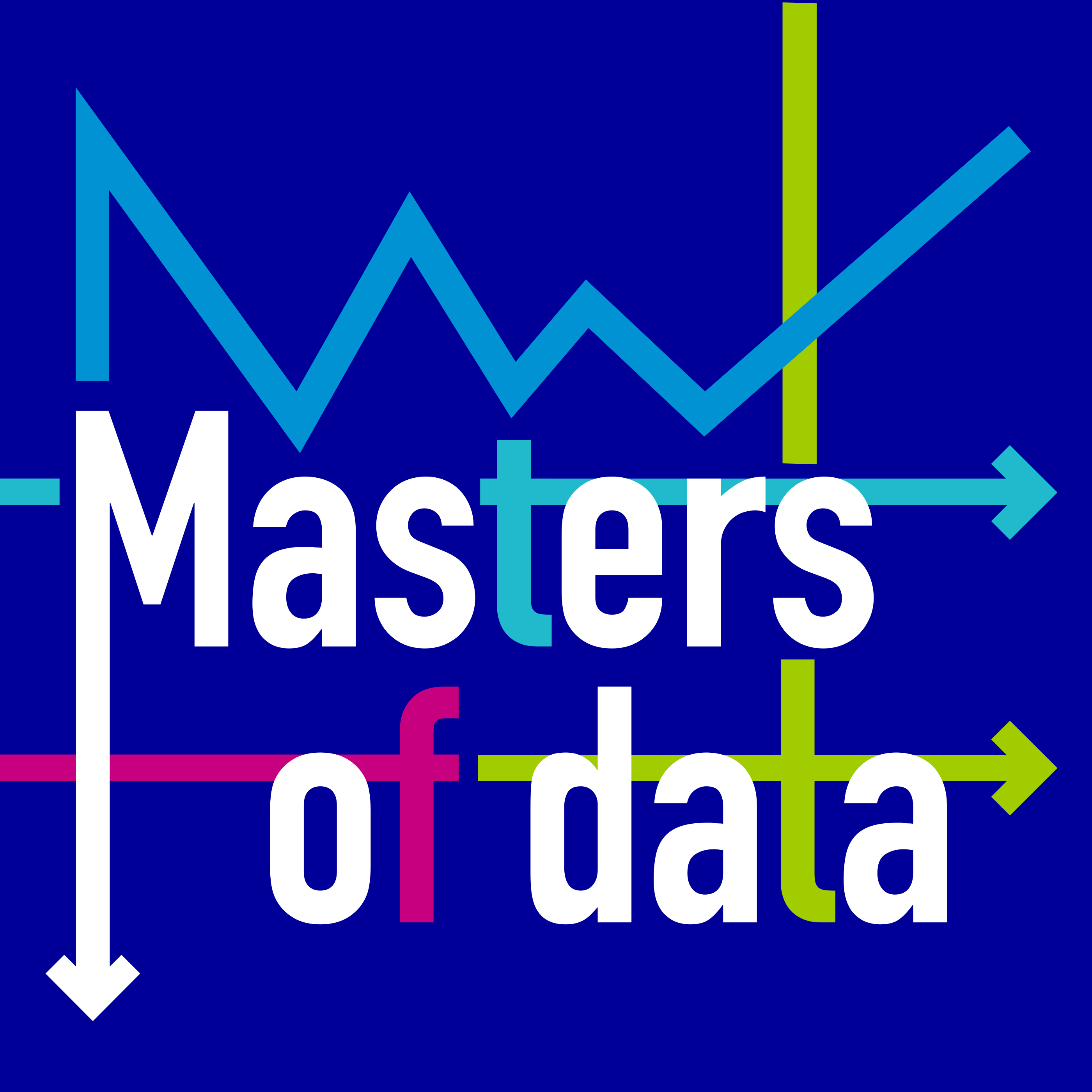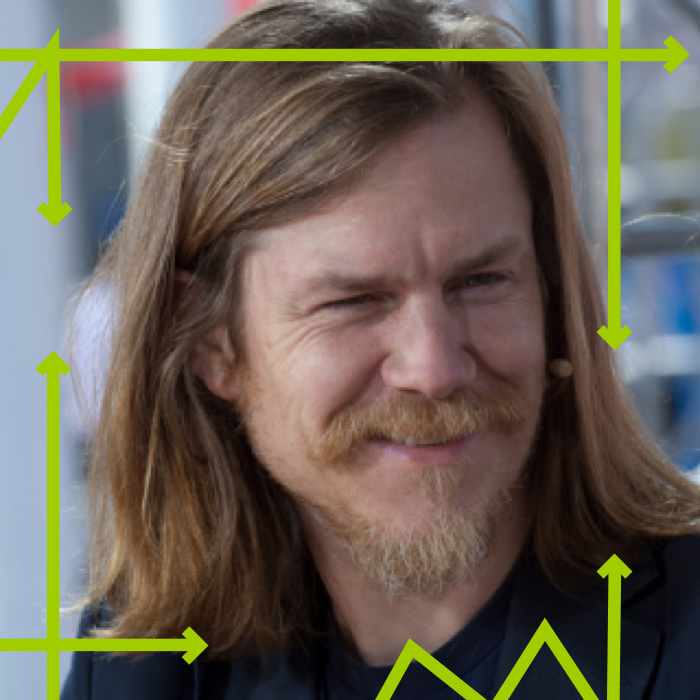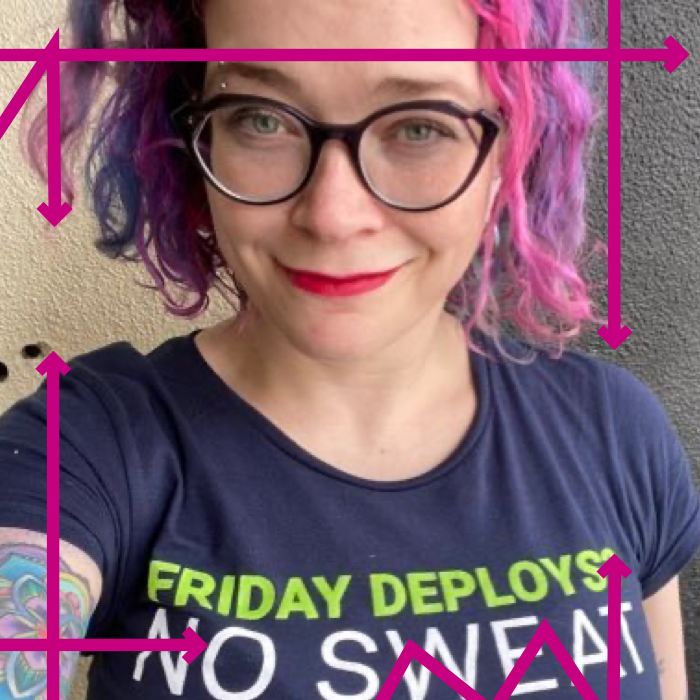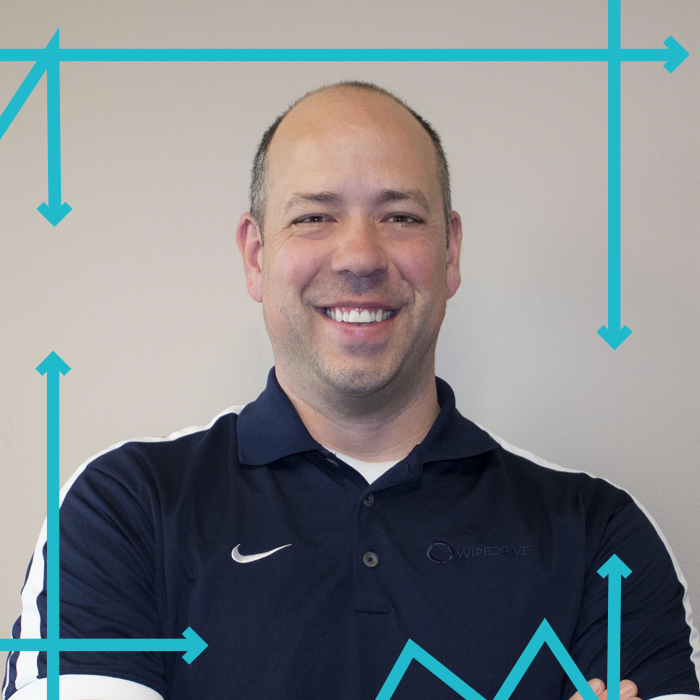Why Curiosity Matters (Guest: Sarah Davanzo)
- 0.5
- 1
- 1.25
- 1.5
- 1.75
- 2
Podcast Name: Masters of Data
Episode Name: Why Curiosity Matters (Guest: Sarah DaVanzo)
Ben: Welcome to the Masters Of Data podcast. The podcast that brings human to data. And I'm your host, Ben Newton. You could be forgiven for thinking that curiosity gets pretty short shift in our culture today.
Ben: Our guest today, Sarah DaVanzo, VP of customer and market insights and foresight's at L'Oreal. Is also referred to as the chief curiosity officer. She takes exploration and curiosity extremely seriously and has applied data science and analytics to the field in an unprecedented way.
Ben: On top of that, she's an extremely interesting person to talk to. So without any further ado, let's dig in. Welcome everybody to the Masters Of Data podcast, and I'm excited this morning to have with me this morning Sarah DaVanzo. And she's a chief curiosity officer at L'Oreal. Thanks for coming on Sarah.
Sarah: Hey gang. Good morning.
Ben: Tell us a little bit what a chief curiosity officer is just to start off with. By the way, I think that's a fantastic title. So what does it actually mean day to day?
Sarah: Well it's AKA Chief Curiosity Officer. I'm actually Vice President Of Consumer and Market Insights And Futurism or Foresight. And I'm referred to as a Chief Curiosity Officer internally because my job is to basically ask questions. And to promote intellectual exploration, experimentation, physical exploration and even visual exploration in service of innovation.
Ben: That sounds like a very fun job.
Sarah: Very fun.
Ben: What I usually start with is talking about peoples backgrounds. So let's talk a little bit about how you got there. I mean looking a little bit in your background it sounds like you've had a pretty interesting life so far. So I mean, how do you get to being where you're at in the curiosity and foresight business?
Sarah: You know that expression, been around the block right? Well I've been around the world exponentially.
Ben: Yeah.
Sarah: A couple of times actually. It's a trajectory that actually took me to 22 countries. I recently counted up the countries I worked in about 20 years abroad. Which I'd say was probably instigated by being fortunate enough the university level going on that semester at sea program you might have heard about. I was so enthralled by culture and wanted to work abroad.
Sarah: And so that's where my career took me. And it's always been in these countries, some kind of intersection, like a superfecta of work somewhere between innovation, marketing, branding, insights and trends. So it's always been those kind of four areas. Working at agencies, consultancies, Fortune 500 companies. And then starting up my own businesses, a couple of businesses myself.
Sarah: So that brought me back to America after about 20 years of doing that unfortunately after a divorce, so I was a little sad after a divorce and came back to New York, my hometown. And you know, started to get think into brand experience, and the local, or the US trend in foresight world which led me to a couple strategy roles.
Sarah: But then ultimately publicists leading the trends in culture division. A publicist in the US for a period of time. And that's when I read about Terry, Terry Young's venture that he was wanting to start out on Sparks & Honey.
Sarah: And there was a great article in the New York Times and I reached out to him and he was building the company. And we hit it off fabulously and it was all the right perfect like peanut butter and chocolate mixture.
Sarah: So that took me to Sparks & Honey for nearly four years building the foundational, cultural intelligence system and then I left 18 months ago to actually branch out and to join L'Oreal in the innovation function, disruptive innovation specifically. And do what I do there.
Ben: When you and I when we connected, we connected through Terry over at Sparks & Honey. And first of all, I mean it's a fascinating company. You were there as the Chief Cultural Officer right?
Sarah: Social Strategy Officer.
Ben: Cultural Strategy Officer. Thank you.
Sarah: Yes.
Ben: What were you doing? And what problem were you actually trying to solve at Sparks & Honey?
Sarah: So one of the big differentiators was and still is actually being data driven. And looking at data to quantify trends and to use it to predict trends. And not just have trend forecasting be entirely qualitative. And in fact that was some of my frustration in my career up to the point I had met Terry was in fact that I wanted to apply data science and analytics.
Sarah: And I knew that algorithms could be built and we could collect the data that was coming, whether it was from Click Stream. Or whether it would be web visitor ship or behavioral science's data, some sensors.
Sarah: Or whether it was CRM data, all that was coming into play in the marketing and advertising world. And you know, I thought hey this stuff needs to be leveraged in a much more thoughtful way. So what I was trying to solve by joining Sparks & Honey was really to create a date driven, cultural relevance machine. And also to use data to look at forecasting, to help businesses future proof.
Sarah: And we can talk about this a little bit later but also the idea that the future is in world and certainly the data world don't have a lot of women, and female voices, or female gazes. And I wanted to be a voice in that space and attract women, and experiment. And you know, represent the female viewpoint of what the future could be.
Ben: Well and definitely when I went and visited it's a fascinating place that you guys built over there. And so you left that and went to L'Oreal. And why did you make that change?
Sarah: Sure, it was getting on to four years of consulting. And I said I've been on different sides of the business, agencies, consultancies at the client. And then my own business. And one of the opportunities that I saw with L'Oreal which is a fabulous company with a gigantic global footprint.
Sarah: So you can make a huge impact right if I'm able to move the needle there right? Was actually seeing the innovation through fruition, from idea to actually in the market. And I think in other roles I've had in the innovation space, and consulting space, there's only so much that the client will allow you into their world.
Sarah: And I think I get a great sense of satisfaction of building. And especially working with the scientists, chemists, roboticist, digital scientists, the biologists. It's such a very heavy data driven community. And seeing whether or not we can use the best of my skills combined with their skills and create something special.
Sarah: So I've been building the foresight and futurism capability within the organization. Also experimenting with a lot of very cutting edge data collection and foresight, and innovation methods so it's been a really great experience.
Ben: Well tell me a little bit about that. I mean it's all over stuff you produced. And on your LinkedIn you talk about it now with foresight, and futurism. Talk a little bit more about what that actually means particularly in the context you're using it.
Sarah: Sure. Everyone's heard of this, it's the possible future, it's the probable future, it's the [inaudible 00:07:24] that's pretty standard stuff. But the reality is that what we want to do is have a greater sense in this VUCA, volatile, uncertain, complex, ambiguous world. All right, we want to have a better sense with data of what the future scenarios will probably look like. And we can design for that so that we can anticipate that.
Sarah: Typically, a lot of innovation, especially in design thinking innovation today, is focused on ethnographies, and consumer research, co creation. Of course, we do all that stuff but consumers really can only really talk about the past and the present.
Sarah: And so what we need is a special complement of consumers or co creators, as well as data to really project out what could be a possibility of the future, and what should be the possibility of the future. And what could we design for that. So there's taking in very disparate data sets.
Sarah: So it might be triangulating CDC information about disease migration maps, social listening, cultural forensics, looking at pop culture and the trajectory of how we got to where we are today. Obviously behavioral data, biometric data, shopping data that's very readily available. And there's projective techniques where we would conduct future facing research.
Sarah: For example, it's very good in the futures world to look at analogs from other industries especially material sciences. So looking at [inaudible 00:08:53] innovations. Looking at trends in art, design and architecture is very important because usually the artistic community is on the zeitgeist intuitively of where culture is headed.
Sarah: Of course, we look at the defense industry. I particularly study defense technologies.
Ben: Really?
Sarah: Yes. No matter what sector, what category you're talking about the DARPA's as a leader for research obviously. And science is important, looking at university labs. Having connections that's often called open innovation in many places. And what you would do is, you're looking at start ups, you're looking at meet ups, we're looking at kick starters. You're looking at IPOs, all that information, of course patents.
Sarah: By the way that is literally just the tip of the iceberg of the kind of data that's analyzed to identify opportunities. So you can already get a sense of how overwhelming it can kind of be. So having tools, and platforms, and systems to parch that, and analyze that and synthesize it, and identify opportunities I think is what is gonna be leading in the innovation space in the future. And hopefully [inaudible 00:10:01]
Ben: That's pretty fascinating. Particularly when I think about you doing this at L'Oreal I think I imagine on some level not necessarily that breath of information. I mean that's absolutely fascinating.
Sarah: Well thank you. But think of it like an onion right? The center of the onion is the today signals. All the little things are happening. You know, one layer out is what I would call the macro layer. And then mega trends are the bigger trends. You've got three hierarchies of trends, micro, macro and mega of course. That's pretty standard stuff.
Sarah: But you know, if you don't understand the mega dynamics of the world, if I don't even doing an innovation for some kind of product that's a beauty product, it could be a makeup product, if you don't understand households, what would be the living style? What will be the day to day behaviors? How will people commute you know? Are they all gonna be in autonomous vehicles? Will there be other methods?
Sarah: You know that all has implications for routines, and habits and behaviors that could have implications with regard to obviously household products and beauty products and so forth. So we have to look at the bigger space and at the very minimum looking at science, technology, economics, the environment, politics, legal system, regulation and so forth.
Sarah: And of course the social demographic shifts and things like that. So that's the foundation. Then within that you have a lot of mutable trends that are macro trends that could be transcended across multiple markets but maybe not global. And those will change over time. And those will be informed by the micro stuff, the signals that are happening every day.
Ben: It does remind me when I was at Sparks & Honey talking to Terry, I didn't expect the breath of signals that they would talk about in their cultural briefing. You know, I was expecting something much more. When I think culture I think I was thinking of a much narrower band. They were looking at a pretty wide signal it sounds like that's what you're doing too.
Sarah: Yeah, absolutely. I define culture with a capital C.
Ben: A capital C.
Sarah: So it's the environment that we're in so it's beyond not necessarily ethnicity or arts and culture, or pop culture. It's much broader than that. It's overwhelming. Data, we talk here masters of data. But I would hope to be a master of data but it's because this is where the conversation about AI has got to come into play.
Sarah: Because I'm finding even with large teams of data scientists at my disposal, whether its in house or outsourced, it's still just a sea of data that is all opportunity. The sea is filled with opportunity but it needs to be triangulated and layered to look for connections, correlations, causation's, white space, what's missing from the data.
Sarah: I always like to say, looking for white space you first have to know what the black space is. You've gotta figure out what you know and then the part that you don't know is the part or the missing pieces of data can be the biggest opportunity at times. So that's a whole different methodology to try to find the holes.
Ben: Well you after you say that I think the title Masters Of Data is probably aspirational. Yeah, that definitely seems to be a theme of modern times that we're washing data and you make that very real.
Sarah: Its an oxymoron. Maybe it's not possible.
Ben: Yeah, exactly. I'm slightly mastering data, this little bit mastering data. You know, one thing you mentioned when we talked before and you've kind of alluded to it here was, this foresight industry, you mentioned it being male dominated and there's a lot of different polls of thought. I mean talk a little bit more about that. What's been your experience in operating in that industry?
Sarah: Sure. And you know, if you go to a foresight conference like the World Future Society, or something like Peter Diamandis's Global Future Of 2045. I actually counted the women in the audience and it was 12%.
Sarah: So you know, you can easily count the heads in the audience but you can also go back and get the data which I've done as well. And you find for example working with there's a trend forecasting crowdsourcing platform called ammonis. And I asked them some time ago to calculate how many women were on it. Only 20% of the users were female at the time. And then you triangulate that with other data sources. I can go on, and on, and on.
Sarah: I've got a whole presentation on this. But the point is for example, the New York Times comments section, sorry not the New York Times, the New York Post. The New York Post, 54% of the readers are male. Yet, they represent 75% of the comments.
Sarah: So there's a couple of studies out there that show that the female voice is often over, I'm not gonna say suppressed because I don't know if that's the point. I think it's just outspoken. That there's more of a domination of the male voice in a lot of platforms around commenting, about projection, and about futures.
Sarah: What does that mean? That means a world of 50/50 cats and dogs but then the dogs lets say, the men have a much larger proportionate say in how to design the world of the future. So all of a sudden they're building dog runs, and dog parks, and making dog food as opposed to representing maybe the cats that are also populating half of the world.
Sarah: So this became a concern especially when I did this, I did like a little mind map some years ago. Which is pretty extensive because it shows the influence of foresight. So foresight, people who do this kind of stuff like what I do, who listens to them? Who cares?
Sarah: Okay, well first of all if you publish white papers, or you do trend reports, or keynotes, or that kind of thing, the kind of industries that it influences is first of all, agencies, venture capital, absolutely venture capital. The investment community that's become the ideas in which everyone garners around.
Sarah: And so these become themes, investment themes. Now that in turn also influences government. Government policy, infrastructure. So you might say, okay well if you have not so many women in the foresight world it doesn't make a difference.
Sarah: But it might because ultimately at the end of the day it's the stuff that's being built and the stuff that's being imagined whether it's the future city design, or whether it's policies for work environments or whatever. That's all coming out of upstream.
Sarah: So you know, if you look at kind of this flow of activity of influence. I use this often too onboard new employees to say take your job very seriously because your data is gonna influence potentially not only innovations but a much larger possible future.
Sarah: So I think attracting women to the sector is important. But then beyond that, there's so many biases just in the world but in foresight it's very liberal. I think there's a statistic something to the effect of like there's only 9 to 15 percent of the community is actually conservative. There's a couple of numbers there.
Sarah: I mean, academia is like that as you know is very liberal so you're not getting conservative viewpoint. You have personality bias. You tend to have people like me, who are outspoken who will do public speaking, where the other half of the population are introverts right?
Sarah: We tend to have opportunity bias, that's a very big bias in terms of yes, I went to university. In fact, I have several degrees and yes I'm very privileged when it comes to the rest of the world when you look at the majority of the planet not having access to resources, and technology, and so forth.
Sarah: So right there the ivory tower that we sit in is also coloring bias. You know, give you some examples of that. And so I think being aware of the biases whether it's gender, or opportunity, or culture. You know, we're talking in English right now.
Sarah: And the English language compared to other languages, in terms of projective thinking, and the English language is very linear. Whereas other languages, say for example, German, where you might the subject in a different place in the sentence structure.
Sarah: It actually changes the way people think about the future. And so that's also bias. And then of course we have the bubble, the algorithm bubble and so forth. So half the battle is just being aware of the biases or the tropes that we fall into. And working to overcome them or offset them.
Ben: And that makes absolute sense because a lot of the other conversations I've had this seems to be an ongoing theme. It's like recognizing the biases and then how do you particularly in your area work against that? Is it by hiring a more diverse set of data scientists than other people on your team to spread that out? I mean how do you push back against those kind of biases in the work you're doing?
Sarah: I think there's multiple ways. Of course, hiring a team. So international diversity or ethnic diversity is super important to me. And I think is important for innovation. Diversity viewpoints and perspective. But within that also looking at personality type, looking at also their style of exploration.
Sarah: As you know, I do a lot of research in this field of curiosity and exploration. And you know, there are four ways in which four styles of curiosity, four different ways people explore the world.
Sarah: And I'll put it simplistically, they see, feel, think and do. I call them lookers, the seers. The feelers are the lickers. I like the lickers. The thinkers are the thinkers. And then the doers are the pokers in my vernacular.
Sarah: So those are four different types of ways that people explore. So especially imagine if I'm building a data team, or a research team, or a foresight team, or an innovation team, all of the above, I want to make sure that I have a healthy mix of pokers, and lickers, and lookers, and thinkers right? Because they're gonna explore the possibilities and the world, and the data. Some will be visual and be looking at visual patterns and also data visualization.
Sarah: Others will be intellectual, will be parsing it. Some will be collecting data through experimentation right? And so forth. So, I think I definitely try to suss out people with little tests and interview questions to try to get a healthy compliment.
Sarah: And also age is important, to get age diversity. And experience diversity. Not everyone has to go to a university or ivy league school. You know, that's important. But in the research world where we are now talking to humans all along to try to identify patterns, and trends, and opportunities, and innovations it's super important to make sure that we're talking to the whole world and not just a bunch of people in New York City right?
Sarah: Or flying in to just Fort Wayne, Indiana and just talk to the people there. We need to get a sense of the zeitgeist and really be very I would say surgical and we are in trying to make sure that we get diverse viewpoints and bring people in for co creation that come from all different kinds of backgrounds. So I think that's important.
Sarah: And right there it's hiring and the people you work with. And then even teams, team building. I've used the four curiosity styles to build the brainstorm team for example because I can just pull people from the company or externally to make sure that I've got lookers, and lickers, and pokers and thinkers.
Ben: When you say that I'm imagining the job description that one of the ones you're hiring with is degree and data science preferred, looker or poker.
Sarah: Yeah, expert licker with a little bit of poker.
Ben: I like the terminology.
Sarah: Yeah, right.
Ben: I think you and I mentioned it before too, I think you used the expression like a polymath that you're looking for people that can explore in different ways and like to be broad. Is that right?
Sarah: Yeah well have I ever talked to you about the curiosity deficit in America?
Ben: No, please, please.
Sarah: Yeah, [inaudible 00:21:51] deficit or fiscal deficit. I'm gonna answer your question it but I want to just preface it with some startling research over and over is corroborating. As I said all these different data inputs. I'm looking at language as a window culture. I mean typically what we talk about and the language we use, often reflects what we're thinking about I mean that's a very classic assumption.
Sarah: So looking at what we talk about and the words we use and what words are in fashion, and go out of fashion. And then of course looking at other behaviors and of course doing primary research.
Sarah: And I'll tell you about that in a second, a piece of research corroborates my point which is, unfortunately for 200 years in the English language in the United States, curiosity has been on a massive decline, 95% complete decline in terms of behaviors, and use of language.
Sarah: But it's interestingly at the inflection point there's something that actually took over which was the concept of innovation. So the use of words around innovation, and behaviors around innovation explosively took off, exponentially took off whereas curiosity exponentially fell dramatically somewhere in the 1970s.
Sarah: But the data suggests that clearly technology, clearly the reliance on technology, computers, and ultimately cell phones and so forth, computation, and even technological distractions like TVs and there's other devices and things like that, seems to be connected to this. You know, you could say people are overwhelmed with data and therefore fight or flight. And a lot of people withdraw. You've heard of the paradox of choice right?
Sarah: So I've been studying this decline of curiosity and then I wanted to actually see if my hypothesis was correct. So I contacted a data science company that I had come across after doing some work with DARPA.
Sarah: This fabulous interesting company that looks at emotion and basically the emotional intention behind what people say, and ultimately what they do, but really what they say. And it's called Heartbeat Ai. Check it out.
Sarah: And so I've collaborated with that company a couple times on some research. And this was a particular study where we took over 2000 Americans nationwide, a demographically absolutely representative of the nation, all those aspects of diversity I told you about earlier.
Sarah: And what we did was we surveyed them, directly asked a bunch of questions direct and indirectly to get at what are they passionately curious about? What's their passionate curiosity?
Sarah: And unfortunately 36% American's are passionately curious about nothing, nothing, not one thing. And when you read the qualitative I'm looking through all the data, you know the concept of MEH kept coming up, or I don't care, or I don't know. And that triggered something.
Sarah: While we have fervent fighting and discourse on television, and in the media, as a cultural strategist, as someone who reads the pulse of humans and looks at data all day long, I don't see that in their behaviors.
Sarah: In fact, I think went out and surveyed a whole ton of colleagues who are consumer researchers and teachers at various different levels of school whether it was elementary, high school, or at the university level, and everybody corroborated that the students or the humans that are being studied or in their circles are absolutely unnoticeable in the past 10 to 12 years a massive decline in inventiveness and exploration.
Sarah: So I call this the curiosity deficit because I think A. Literally the data suggests that the chart in favor of innovation but this is a problem especially if we have wicked problems to solve, I would think we would want to have our best to figure out how to get off the planet with the Kessler effect of smashing satellite debris.
Sarah: You know, we've got all kinds of really, really existential problems which is what you call in the foresight world of like the problems that threaten the existence of humanity, existential problems. And so I'm concerned that our ability to problem solve and our way out of some of these problems are gonna be thwarted by the fact that we are growing in curiousness in society and especially our youngin.
Ben: Well it's interesting you know particularly I don't think I told you this before but I have two younger kids, a four year old and a seven year old. When you looked at this have you thought what do we do with these younger kids?
Ben: Sometimes it seems like keeping their curiosity going because at least I know with my kids when they're very small they're born curious. And it seems like we on some level we beat the curious out of them over time. How do we encourage them to keep that curiosity going into their 20s and 30s?
Sarah: There has to be parental intervention because certainly the school system with our common core, and the way that our standardized testing works, it's not rewarding exploration. And let's replace the word curiosity with exploration because I think sometimes that can be easier for people to grasp because curiosity is not as I pointed out just asking questions.
Sarah: It's exploring the world. It's exploring the world by as I said, looking, and licking, and thinking, and poking. And I think there's also a lot of premium placed on asking questions in the school environment. And yet we can explore in so many other ways just like there are seven learning styles.
Sarah: So I think the parents will have to take it into their own hands to help their children, coach them, and encourage them to explore in all its messiness, to experiment, and DIY, and to ask hypothetical questions, and to push their pallets, to simply pushing the food choices, and the sensory stimulation.
Sarah: And helping them to understand that playing the pattern games. There's coaching that can be done and it probably has to be done because I don't know where the children are gonna get these skills if they're not getting it from their school environment.
Sarah: There's a little hope because I think that millennial parents ... I study generations a lot and look at the data between Gen Z and Gen Y, and there's stark differences right? There are vast differences in those two generations pretty much because Gen Z doesn't want to do anything the millennials did.
Sarah: So the younger siblings are rejecting a lot of those choices are going the extreme opposite, like disconnecting in terms of data, turning off their geo location, and getting off of Facebook and social media. There's like a return to analog, and lot of traditional values.
Sarah: And I think millennial parents, many of them are concerned about the data collection, lack of privacy, and a lot of the negative aspects that go with devices, and technology, and data. And are purposely trying, they call them develop free range children, helping the kids roam around and explore. And that's positive, that's a positive movement in favor of maybe bolstering our civic curiosity.
Ben: That's really interesting. I definitely see some of that with what's going on right now with kids. I mean even things like the maker movement and these different things where it's just encouraging kids to do things with their hands. Yeah, I think its interesting.
Ben: To put a bow on all this, we talked to a lot here. You've got your hands in a lot of different things and you are doing foresight so I guess you have to get as much data as possible and your pulling all of this together. But what are you working at next? I mean what's the big thing for you over the next year or two? What are you thinking about working on?
Sarah: I am laying out the blueprint for an AI chief innovation officer capability. And let me tell you the rationale for that this is not to put anybody out of business. This is actually because there's some really interesting research.
Sarah: For example CB Insights they're a data company that has state of innovation report. Check it out, it's available online, the PDF. And it's a survey of American companies and there's other pieces of research that corroborate this that, about 80% of American businesses don't have any innovation function.
Sarah: And largely because it's perceived as don't know how, too expensive, not sure. They just don't have the skills, they don't have the leader, they don't have the ability to set up an innovation function. And that makes me a little sad because I think that everyone could benefit from having access to some kind of skills that would help them problem solve, explore, and innovate.
Sarah: And I think the world would be a good place if there was more that happening whether it's at the individual level, or at the corporate level. So I'm interested in SME's. And the smaller businesses, clearly like the Fortune 500 all have the innovation functions, not all of them but a lot of them do.
Sarah: What about the majority of the rest of the businesses out there you know? And so if there's a way to not automate. And this is not about autonomous humans, this is about providing skills and guidance, and frameworks, and helping to also explain data.
Sarah: And how to give people who may be not so data savvy some simple tools, and tricks, and tips, and platforms to be able to do some basic data analysis and triangulation to help them with their innovation.
Sarah: So I feel like there's a barrier in this space. I think the data is daunting especially to SME's that might not have fluency and don't have the teams. That darkly connects with innovation. So anyone who wants to build an AICIO with me let me know because I'm working up the crazy blueprints right now.
Ben: I think that sounds fascinating. And I think that's like one particular example of what's going on overall is there's not enough data scientists and AI experts, and machine learning experts to go around.
Ben: And at some point the point is about really just enabling a wider swath of industry to be able to take advantage of that without having to be experts in all these things. I think that's a pretty worthy goal.
Sarah: And another thing, I mean look the chief innovation officer CIO, I don't think its happenstance that it's often the same acronym for Chief Information Officer. Because innovation requires information. And so, not to say that they're interchangeable roles but the need for data, and information, and exploration, I emphasize the exploration to fuel innovation is core to innovation.
Ben: Yeah. That makes a lot of sense. This was a fascinating discussion Sarah. I really enjoyed walking through this with you. You do very interesting things.
Sarah: Thank you very much. It was an absolute pleasure. Help me become a master of data.
Ben: I'll do my best.
Sarah: Okay.
Ben: All right. Thanks Sarah.
Sarah: Okay. Bye-Bye.
Speaker 3: Masters Of Data is brought to you by Sumo Logic. Sumo Logic is a cloud native, machine data, analytics platform delivering real time continuous intelligence as a service to build, run and secure modern applications. Sumo Logic, empowers the people who power modern business.
Speaker 3: For more information go to sumologic.com. For more on Masters Of Data, go to mastersofdata.com and subscribe. And spread the word by rating us on iTunes or your favorite podcast app.
DESCRIPTION
You could be forgiven for thinking that curiosity gets pretty short shrift in our culture today. Our guest on this episode, Sarah Davanzo - VP of Consumer and Market Insights and Foresights at L’Oreal is also referred to as the Chief Curiosity Officer. She takes exploration and curiosity extremely seriously and has applied data science and analytics to the field in an unprecedented way. On top of that, she is an extremely interesting person to talk to.
